Cordillera Disaster Response and Development Services (CorDisRDS)
Situational Report No. 3
September 18, 2018

Situation Overview
- On September 14, 2018, at about 1:00 AM, Typhoon Ompong (International Code Name Mangkhut) passed through the Cordillera Region.
- The typhoon brought heavy rains and strong winds with speeds of up to 265 kph that caused widespread damage to agriculture, shelter and infrastructure. There were also numerous reported casualties.
- A total of 119 landslides and 33 flooding incidents were reported in the region.These landslides caused road closures shelter damage, damage to livelihood, and casualties.
- A total of 10,404 families or 38,864 individuals were displaced in the provinces of Abra, Benguet, Apayao, Ifugao, Kalinga, Mt. Province and the City of Baguio. Of those affected, 7,683 families or 28,211 individuals were served inside 328 evacuation centers.
- As of 1800H of September 17, 2018, fifty four (54) were reported dead, thirty two (32) were injured and forty eight (48) are still missing. These numbers are expected to rise as the search and rescue operations are still ongoing.
- 127 road sections in the region are currently closed to traffic due to road slips, road collapse, landslides and fallen debris.
- The typhoon caused widespread blackouts in all of the provinces. Currently, power has been restored in 5 out of the 11 municipalities of Ifugao, 17% in Benguet and 60 % in Mt. Province. Power in several barangays of Bangued, Abra have been restored. Power is yet to be restored in the provinces of Apayao and Kalinga.
- The provinces of Benguet, Abra, Kalinga and the municipality of Mayoyao in Ifugao have declared a state of calamity.
- The Department of Agriculture reported an estimated 2 billion pesos worth of damages to agriculture. The main crops affected are rice, corn, fruit trees and vegetables.
- The Cordillera Disaster Response and Development Services Inc. and its partner peoples’ organizations continue to conduct monitoring with the aim of contacting the far-flung communities who were unable to communicate during the typhoon. Partners and staff are also currently coordinating with the local government units in the different provinces. Relief operations have also begun.
- Immediate needs identified by provincial partners are immediate food relief, shelter repair kits, hygiene kits and livelihood assistance.

CURRENT SITUATION
- Damage to Agriculture and Livelihood
The largely farming population of the region are severely affected due to failure of harvest, whichis their main source of food and livelihood. The Habagat-induced rains that lasted for about 2 months before Typhoon Ompong arrived already caused great losses to farmers. These losses were further worsened by the typhoon.
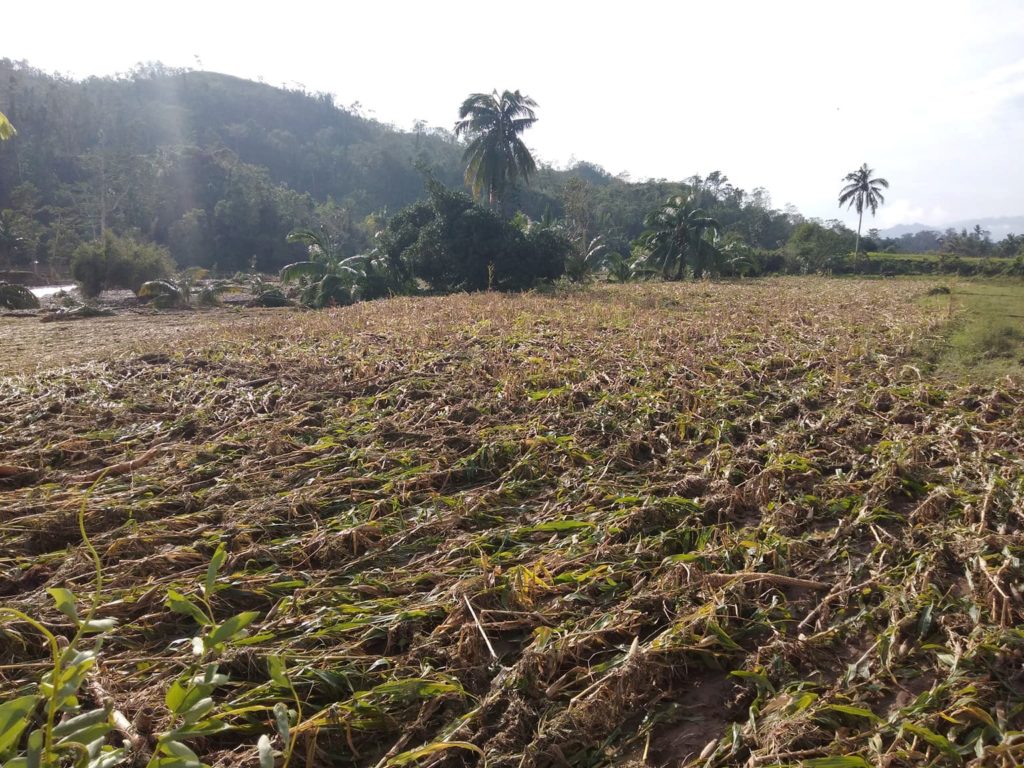
Table 1. Damages to agriculture
| PROVINCE | ESTIMATED VALUE | AREA AFFECTED (Ha) | FARMERS AFFECTED |
| Rice | Rice | 76,186.15 | 102,421 |
| Corn | Banana | 58,037.19 | 46,027 |
| High-value crops | Rice | 5,750.35 | 22,281 |
| Livestock and poultry | Banana | 20,316 heads | 211 |
| Agricultural infrastructure | Rice | Not applicable | No data |
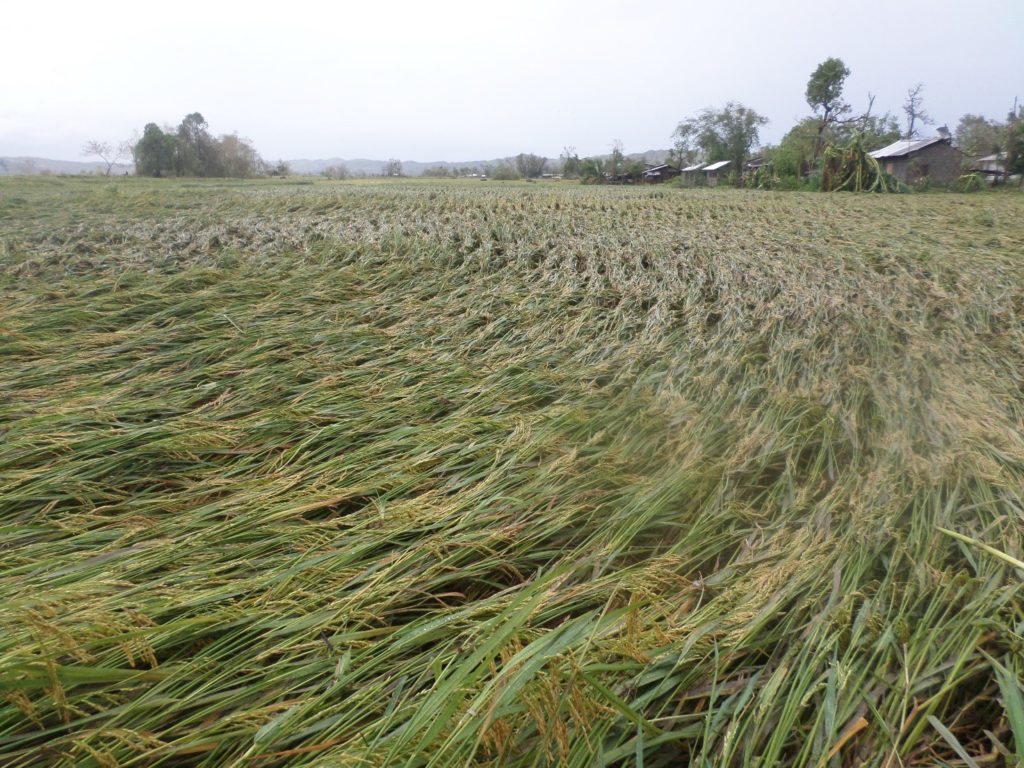
2. Damage to Shelter
Shelter damage mainly due to the strong winds was reported by the different provinces. Most of the houses in the upland communities are built from light materials and were not strong enough to withstand the strong winds. Those whose houses were damaged have limited means to immediately restore their shelters. The figures presented are expected to increase when information from communities who have yet to submit reports comes in.
Table 2. Damages to shelter
| AREA | PARTIALLY DAMAGED | TOTALLY DAMAGED |
| Brgy. Balong, Tabuk, Kalinga | 150 | 30 |
| Brgy. Allaguia, Pinukpuk, Kalinga | 1 | No data |
| Brgy. Poswoy, Balbalan, Kalinga | 15 | No data |
| Brgy. Western Uma, Lubuagan, Kalinga | 8 | No data |
| Banaue, Ifugao | 130 | 2 |
| Brgy. Puguin, Conner, Apayao | 105 | 4 |
| Brgy. Guinamgaman, Conner, Apayao | 227 | 3 |
| Brgy. Mawigue, Conner, Apayao | 96 | 6 |
| Brgy.Buluan, Conner, Apayao | 196 | 3 |
| Brgy. Talifugo, Conner, Apayao | 78 | 1 |
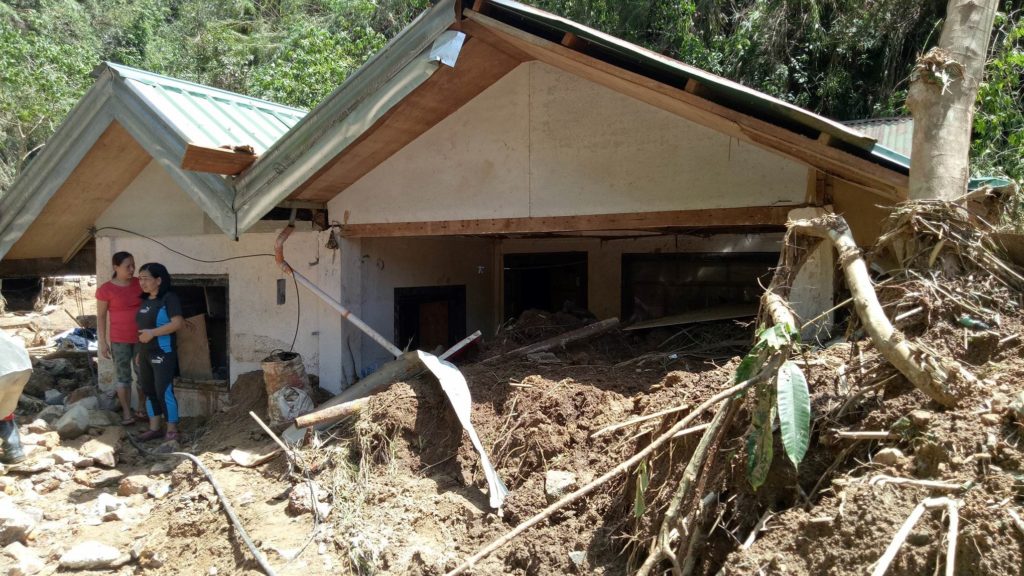
3. Damage to Transport& Communication
During the typhoon and immediately after, majority of the roads leading to the provinces and town centers were closed due to landslides, flooding, road slips, and fallen debris. Some of these roads have since been opened and access to the communities and provinces is being restored. Most of the roads that remain closed are those leading to the far-flung communities. These communities continue to be isolated and their food reserves may soon be depleted.
Communication lines in upland Abra, upland Kalinga, portions of Ifugao, portions of Benguet, portions of Mt. Province and portions of Apayao have yet to be restored
Currently, power has been restored in 5 out of the 11 municipalities of Ifugao, 17 % in Benguet and 60 % in Mt. Province. Power in several barangays of Bangued, Abra have been restored. Power is yet to be restored in the provinces of Apayao and Kalinga.

4. Casualties
Table 3. Official number of casualties recorded in the region
| PROVINCE | DEAD | MISSING | INJURED |
| Benguet | 38 | 37 | 17 |
| Baguio | 9 | 5 | 2 |
| Apayao | 0 | 0 | 2 |
| Abra | 0 | 0 | 0 |
| Ifugao | 0 | 0 | 5 |
| Kalinga | 1 | 0 | 3 |
| Mt. Province | 6 | 0 | 3 |
Majority of the casualties were caused by landslides. The victims were either buried by falling soil, hit by rocks or carried away by the debris. This typhoon has brought the largest recorded death toll since the catastrophic 1990 earthqauke that hit the region.
The incident that caused the most casualties occurred when a portion of the mountain in Barangay Ucab, Itogon fell and buried the bunkhouses used by small-scale miners. The was already heavy with water even before the typhoon due to the continuous heavy monsoon rains. Latest reports from the ground indicate that 14 bodies have been recovered while 65 are still missing.
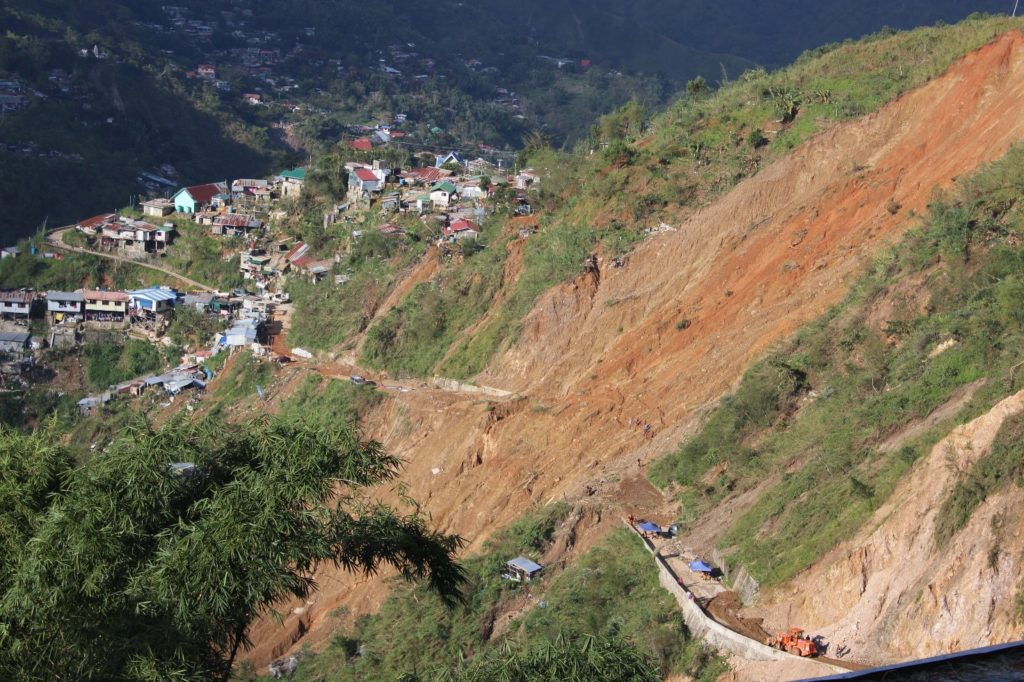
5. Displaced Population
Table 4. Displaced population
| Location | Families | Individuals |
| Abra | 1,589 | 6,098 |
| Apayao | 3,201 | 11,430 |
| Baguio | 469 | 1,933 |
| Benguet | 1,573 | 5,990 |
| Ifugao | 552 | 1,749 |
| Kalinga | 2,646 | 10,379 |
| Mt. Province | 374 | 1,285 |
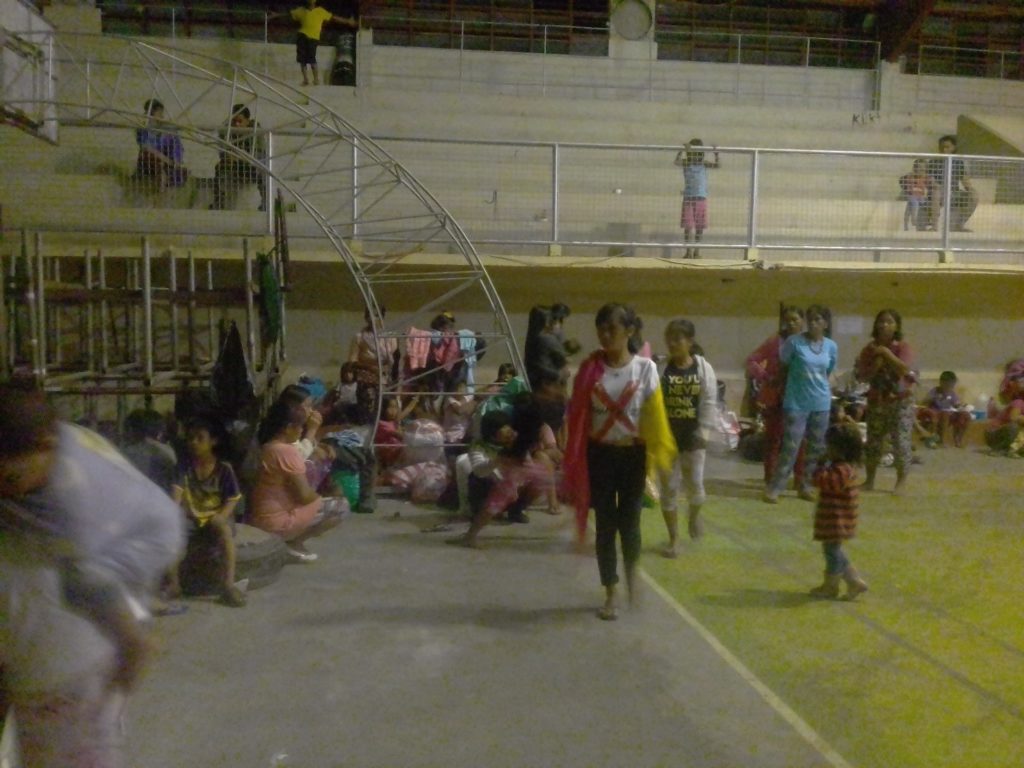
Humanitarian Response
To date the Department of Social Welfare and Development and the different local government units have provided 4,10,820.2 pesos worth of food pack to the affected population.
A response team composed of 8 CorDis RDS staff and 2 representatives fromCARE Philippines went to SitioSurong and SitioDalisay, both of BrgyGumatdang, Itogon,Benguet on the afternoon of 18 September 2018. The team chose to distribute emergency relief to these two sitios because many houses were (partially and totally) damaged there due to mudslides.
Thirty (30) sacks of rice were distributed to the residents of the two sitios. Twenty one (21) households received 1,000 pesos each in cash assistance.
CorDis RDS partner, KAIABANG, a province wide peoples’ organization, coordinated with the community members directly.
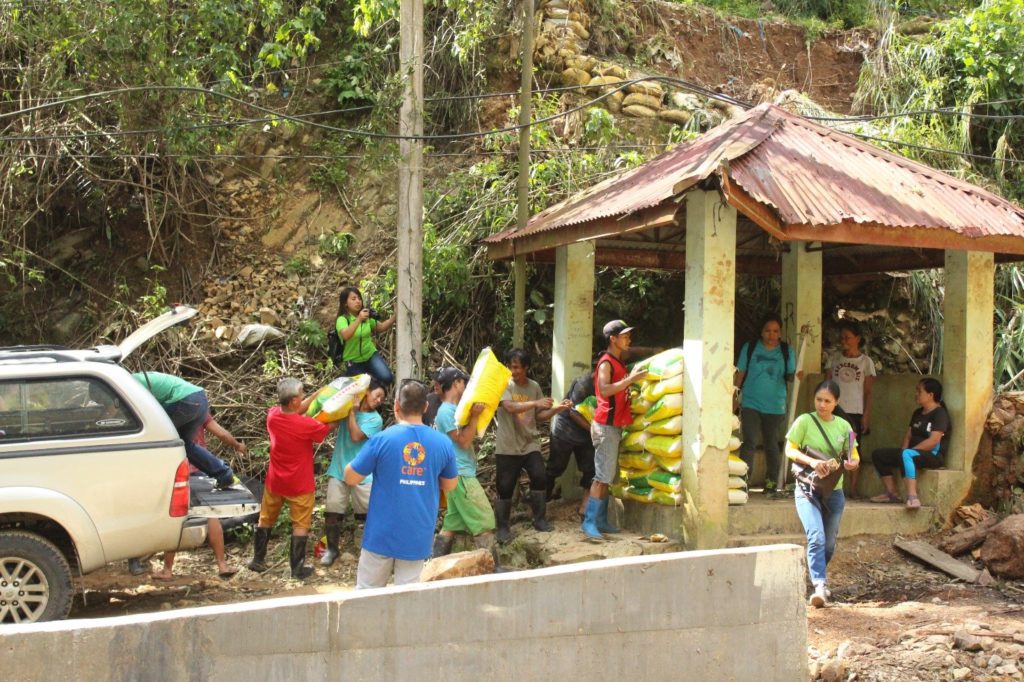
Initial Target Communities for Assistance and Initial Needs Identified
Kalinga – food and non-food items, shelter kits, sleeping kits, hygiene kits, livelihood assistance
Benguet – food and non-food items, shelter kits, sleeping kits, hygiene kits, livelihood assistance
Apayao – food and non-food items, shelter kits, sleeping kits, hygiene kits, livelihood assistance
Data Sources:
- Disaster Needs Capacities Assessment (DNCA) from grassroots communities in the Cordillera Region
- DOST-Pagasa reports and announcements
- PDRRMO reports
- Office of Civil Defense Cordillera
- Reports from partner peoples’ organizations

Leave a Reply